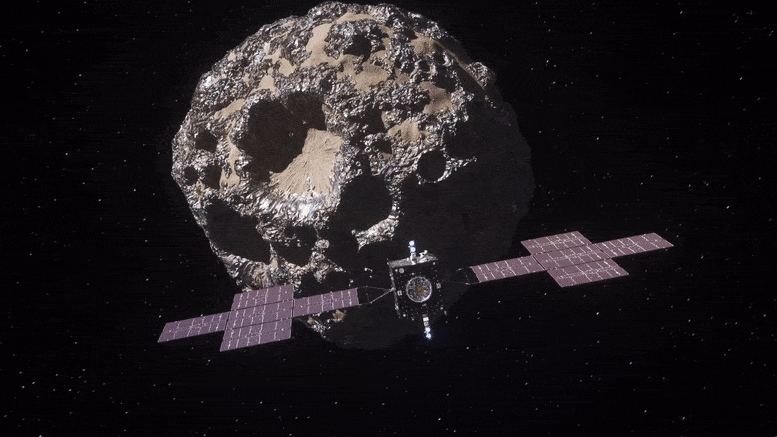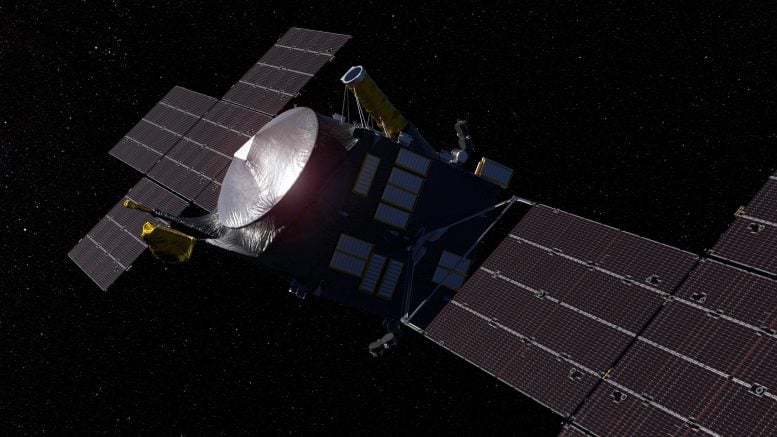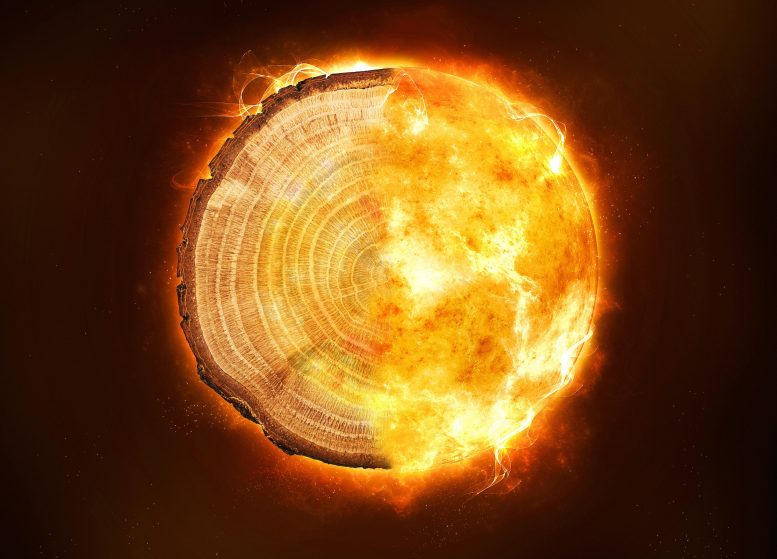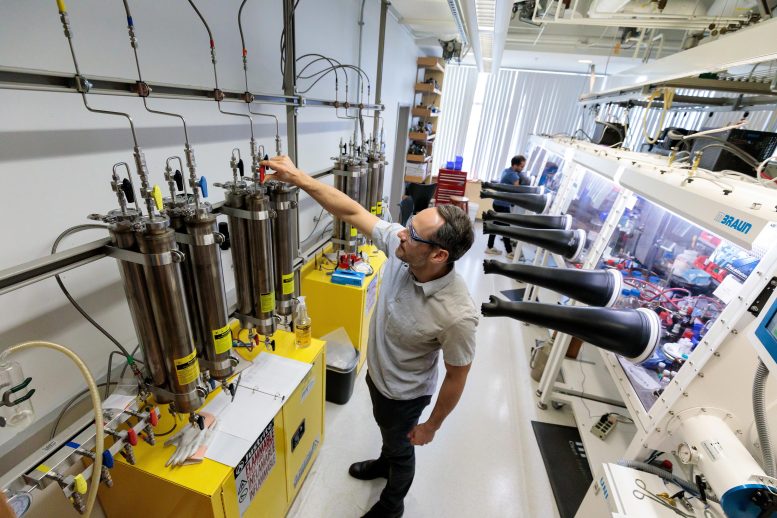Rechercher dans ce blog
Monday, October 31, 2022
Sunday, October 30, 2022
ROCKET LAUNCH SpaceX Falcon Heavy USSF-44 - Kennedy Space Center
Feel The Heat Launch Viewing Package
Get as close to the launch pad as possible. From here, you will see the rocket leave the pad! Plus, gain exclusive access to the Apollo/Saturn V Center exhibits and attractions during the launch window.
WHERE: Banana Creek Launch Viewing Area at the Apollo/Saturn V Center
DISTANCE: Approximately 3.9 miles/6.27 kilometers
PRICE: $250 plus tax, available online only
INCLUSIONS:
- Launch viewing packages support two launch attempts and an additional daily admission ticket that is valid to use within 30 days after the launch date.
- Bus transportation through NASA’s gates to the Apollo/Saturn V Center
- Real-time launch commentary from a space-expert
- Complimentary meal
- Complimentary premium souvenir
- A commemorative launch card, badge and lanyard
- Digital photo of your party from AstroPhotos
IMPORTANT INFORMATION:
- Check-in for Feel the Heat begins at 5:30 AM; Bus boarding begins at 6:00 AM.
- Plan to arrive early and plan for increased traffic
- Bleacher space is limited. For lawn seating, we recommend you bring a blanket or foldable chair that can be carried in a shoulder bag
- Launch viewing packages are for all ages, but children must be accompanied by an adult
- Launch viewing packages support two launch attempts and an additional daily admission ticket that is valid to use within 30 days after the launch date.
- Please review the Scrub Policy
https://ift.tt/Ur70kOu
Science
Monstrous asteroid to speed by Earth next week - New York Post

A large “potentially hazardous asteroid” is expected to swing fewer than six lunar distances from Earth at the beginning of next month.
The asteroid, known as 2022 RM4, is expected to pass by Earth on Nov. 1 – about 1.5 million miles away at its closest point.
According to NASA’s Center for Near Earth Object Studies, the asteroid has an estimated diameter of between 330 and 740 meters, or up to over 2,400 feet.
It will pass by the blue planet at around 52,500 miles per hour, according to LiveScience.
Any space object that comes within 120 million miles of Earth is deemed a “near-Earth object.”
Any large body within 4.6 million miles of Earth is classified with the astronomical term: a “potentially hazardous asteroid.”
2022 RM4 is also an Apollo-type asteroid, which is a class of objects named for asteroid 1862 Apollo.
Such asteroids have an orbit that is larger than Earth’s orbit around the sun and their path crosses Earth’s path.
2002 RM4 orbits the Sun every 1,397 days and its path does occasionally cross Earth’s orbital path around the Sun.
According to NASA, Earth faces no known danger from an apocalyptic asteroid collision for at least the next century.
In addition, the agency’s Double Asteroid Redirection Test (DART) spacecraft recently redirected the non-hazardous asteroid Dimorphos by sending it off course.
Article From & Read More ( Monstrous asteroid to speed by Earth next week - New York Post )https://ift.tt/RtXKj1L
Science
Saturday, October 29, 2022
NASA Psyche Asteroid Mission Will Go Forward - SciTechDaily

NASA’s Psyche mission will explore a unique metallic asteroid orbiting the sun between Mars and Jupiter. The asteroid, likely made largely of nickel-iron metal mixed with rock, could contain metal from the core of a planetesimal (the building block of an early rocky planet) and may offer a unique window into the violent history of collisions and accretion that created the terrestrial planets like Earth. Credit: NASA
The mission team continues to complete testing of the spacecraft’s flight software in preparation for the 2023 launch date.
On Friday, October 29, NASA announced that the agency decided its Psyche mission will go forward, targeting a launch period opening on October 10, 2023.
Psyche missed its planned 2022 launch period earlier this year as a result of mission development problems, leading to an internal review of whether the mission would be able to overcome these issues to successfully launch in 2023.
This continuation/termination review was informed by a project-proposed mission replan and a separate independent review, commissioned in June by NASA and the agency’s Jet Propulsion Laboratory (JPL) in Southern California, that investigated causes for the delay.
“I appreciate the hard work of the independent review board and the JPL-led team toward mission success,” said Thomas Zurbuchen, associate administrator of NASA’s Science Mission Directorate in Washington. “The lessons learned from Psyche will be implemented across our entire mission portfolio. I am excited about the science insights Psyche will provide during its lifetime and its promise to contribute to our understanding of our own planet’s core.”

This artist’s concept, updated as of June 2020, depicts NASA’s Psyche spacecraft. Credit: NASA/JPL-Caltech/ASU
The independent review board is still finalizing its report, which, along with NASA’s response, will be shared publicly once complete.
In preparation for the 2023 launch date, the mission team continues to complete testing of the spacecraft’s flight software. The new flight profile is similar to the one originally planned for August 2022, using a Mars gravity assist in 2026 to send the spacecraft on its way to the asteroid Psyche. With an October 2023 launch date, the Psyche spacecraft will arrive at the metal-rich asteroid in August 2029.
“I’m extremely proud of the Psyche team,” said JPL Director Laurie Leshin. “During this review, they have demonstrated significant progress already made toward the future launch date. I am confident in the plan moving forward and excited by the unique and important science this mission will return.”
NASA selected Psyche in 2017 to investigate a previously unexplored metal-rich asteroid of the same name. It is part of the agency’s Discovery Program, a line of low-cost, competitive missions led by a single principal investigator.
NASA continues to assess options for its Janus mission exploring twin binary asteroid systems, which was originally scheduled to launch on the same SpaceX Falcon Heavy rocket as Psyche. NASA’s Deep Space Optical Communications technology demonstration, testing high-data-rate laser communications, is integrated into the Psyche spacecraft and will continue as planned on the new launch date.
The Psyche mission is a journey to a unique metal asteroid orbiting the Sun between Mars and Jupiter. What makes the asteroid Psyche unique is that it appears to be the exposed nickel-iron core of an early planet, one of the building blocks of our solar system.
Deep within rocky, terrestrial planets – including Earth – scientists infer the presence of metallic cores, but these lie unreachably far below the planets’ rocky mantles and crusts. Because we cannot see or measure Earth’s core directly, Psyche offers a unique window into the violent history of collisions and accretion that created terrestrial planets.
Arizona State University leads the Psyche mission. JPL, which is managed for NASA by the California Institute of Technology (Caltech) in Pasadena, California, is responsible for the mission’s overall management, system engineering, integration and test, and mission operations. Maxar Technologies in Palo Alto, California, is providing the high-power solar electric propulsion spacecraft chassis. NASA’s Launch Services Program, based at the agency’s Kennedy Space Center in Florida, is managing the launch. Psyche is part of NASA’s Discovery Program, managed by the agency’s Marshall Space Flight Center in Huntsville, Alabama.
Article From & Read More ( NASA Psyche Asteroid Mission Will Go Forward - SciTechDaily )https://ift.tt/aQ7ptje
Science
Tree Rings Offer Insight Into Mysterious, Devastating Radiation Storms - SciTechDaily

A composite image showing a tree ring and flames – UQ researchers used tree ring data to model the global carbon cycle to challenge the common theory about Miyake Events. Credit: The University of Queensland
New light has been shed on a mysterious, unpredictable, and potentially devastating kind of astrophysical event, thanks to a University of Queensland (UQ) study.
A team of researchers, led by Dr. Benjamin Pope from UQ’s School of Mathematics and Physics, applied cutting-edge statistics to data from millennia-old trees, to find out more about radiation ‘storms’.
“These huge bursts of cosmic radiation, known as Miyake Events, have occurred approximately once every thousand years but what causes them is unclear,” Dr. Pope said.
“The leading theory is that they are huge solar flares. We need to know more, because if one of these happened today, it would destroy technology including satellites, internet cables, long-distance power lines, and transformers.
“The effect on global infrastructure would be unimaginable.”
“Rather than a single instantaneous explosion or flare, what we may be looking at is a kind of astrophysical ‘storm’ or outburst.” — Qingyuan Zhang
Enter the humble tree ring.
First author Qingyuan Zhang, a UQ undergraduate mathematics student, developed software to analyze every available piece of data on tree rings.
“Because you can count a tree’s rings to identify its age, you can also observe historical cosmic events going back thousands of years,” Mr Zhang said.
“When radiation strikes the atmosphere it produces radioactive carbon-14, which filters through the air, oceans, plants, and animals, and produces an annual record of radiation in tree rings.
“We modeled the global carbon cycle to reconstruct the process over a 10,000-year period, to gain insight into the scale and nature of the Miyake Events.”
The common theory until now has been that Miyake Events are giant solar flares.
“But our results challenge this,” Mr. Zhang said. “We’ve shown they’re not correlated with sunspot activity, and some actually last one or two years.
“Rather than a single instantaneous explosion or flare, what we may be looking at is a kind of astrophysical ‘storm’ or outburst.”
“The effect on global infrastructure would be unimaginable.” — Dr. Benjamin Pope
Dr. Pope said the fact scientists don’t know exactly what Miyake Events are, or how to predict their occurrence is very disturbing.
“Based on available data, there’s roughly a one percent chance of seeing another one within the next decade. But we don’t know how to predict it or what harms it may cause.
“These odds are quite alarming, and lay the foundation for further research.”
The research is published in Proceedings of the Royal Society A.
Reference: “Modelling cosmic radiation events in the tree-ring radiocarbon record” by Qingyuan Zhang, Utkarsh Sharma, Jordan A. Dennis, Andrea Scifo, Margot Kuitems, Ulf Büntgen, Mathew J. Owens, Michael W. Dee and Benjamin J. S. Pope , Proceedings of the Royal Society A Mathematical Physical and Engineering Sciences.
DOI: 10.1098/rspa.2022.0497
The study was also completed with undergraduate maths and physics students Utkarsh Sharma and Jordan Dennis.
The work was supported by a philanthropic donation to UQ from the Big Questions Institut.
Article From & Read More ( Tree Rings Offer Insight Into Mysterious, Devastating Radiation Storms - SciTechDaily )https://news.google.com/__i/rss/rd/articles/CBMiX2h0dHBzOi8vc2NpdGVjaGRhaWx5LmNvbS90cmVlLXJpbmdzLW9mZmVyLWluc2lnaHQtaW50by1teXN0ZXJpb3VzLWRldmFzdGF0aW5nLXJhZGlhdGlvbi1zdG9ybXMv0gFjaHR0cHM6Ly9zY2l0ZWNoZGFpbHkuY29tL3RyZWUtcmluZ3Mtb2ZmZXItaW5zaWdodC1pbnRvLW15c3RlcmlvdXMtZGV2YXN0YXRpbmctcmFkaWF0aW9uLXN0b3Jtcy9hbXAv?oc=5
Science
Friday, October 28, 2022
Scientists Astonished by Strange Material That Can Be Made Like Plastic but Conducts Like Metal - SciTechDaily

A group of scientists at the University of Chicago has discovered a way to create a material in which the molecular fragments are jumbled and disordered, but can still conduct electricity extremely well. This goes against all of the rules we know about conductivity. Above is an artist’s conception of the lattice. Credit: Illustration by Frank Wegloski
‘Like conductive Play-Doh’: breakthrough could point way to a new class of materials for electronic devices.
University of Chicago scientists have discovered a way to create a material that can be made like a plastic, but conducts electricity more like a metal.
The research shows how to make a kind of material in which the molecular fragments are jumbled and disordered, but can still conduct electricity extremely well. It was published on October 26 in the journal Nature.
This goes against all of the rules we know about conductivity—to a scientist, it’s kind of like seeing a car driving on water and still going 70 mph. But the finding could also prove to be extraordinarily useful. Often, on the way to inventing something revolutionary, the process first starts with discovering a completely new material.
“In principle, this opens up the design of a whole new class of materials that conduct electricity, are easy to shape, and are very robust in everyday conditions,” said John Anderson, an associate professor of chemistry at the University of Chicago and the senior author on the study. “Essentially, it suggests new possibilities for an extremely important technological group of materials,” said Jiaze Xie (PhD’22, now at Princeton), the first author on the paper.
‘There isn’t a solid theory to explain this’
If you’re making any kind of electronic device, whether it be an iPhone, a solar panel, or a television, conductive materials are absolutely essential. Metals, such as copper, gold, and aluminum, are by far the oldest and largest group of conductors. Then, about 50 years ago, scientists were able to create conductors made out of organic materials, using a chemical treatment known as “doping,” which sprinkles in different atoms or “impurities” throughout the material. The fact that these materials are more flexible and easier to work with than conventional metals makes them attractive, but the problem is that they aren’t particularly stable and may lose their conductivity if exposed to moisture or if the temperature rises too high.
However, fundamentally, both organic and traditional metallic conductors share a common characteristic. They are made up of straight, closely packed rows of atoms or molecules. This means that electrons can easily flow through the material, much like cars on a highway. In fact, scientists thought a material had to have these straight, orderly rows in order to conduct electricity efficiently.

Illustration of the structure of the material. Nickel atoms are shown in green, carbon atoms in gray, and sulfur atoms in yellow. Credit: Illustration by Xie et al
Then Xie began experimenting with some materials that were discovered years ago, but largely ignored since. He strung nickel atoms like pearls into a string of molecular beads made of carbon and sulfur, and began testing.
To the scientists’ astonishment, the material easily and strongly conducted electricity. What’s more, it was very stable. “We heated it, chilled it, exposed it to air and humidity, and even dripped acid and base on it, and nothing happened,” said Xie. That is enormously helpful for a device that has to function in the real world.
But the most striking thing to the scientists was that the molecular structure of the material was disordered. “From a fundamental picture, that should not be able to be a metal,” said Anderson. “There isn’t a solid theory to explain this.”
Xie, Anderson, and their lab worked with other scientists around the university to try to understand how the material can conduct electricity. After tests, simulations, and theoretical work, they think that the material forms layers, like sheets in a lasagna. Even if the sheets rotate sideways, no longer forming a neat lasagna stack, electrons can still move horizontally or vertically—as long as the pieces touch.
The end result is unprecedented for a conductive material. “It’s almost like conductive Play-Doh—you can smush it into place and it conducts electricity,” Anderson said.
To the scientists’ astonishment, the material easily and strongly conducted electricity.
The scientists are excited because the discovery suggests a fundamentally new design principle for electronics technology. Conductors are so important that virtually any new development opens up new lines for technology, they explained.
One of the material’s attractive characteristics is new options for processing. For example, metals usually have to be melted in order to be made into the right shape for a chip or device, which limits what you can make with them, since other components of the device have to be able to withstand the heat needed to process these materials.

A group of scientists from the University of Chicago has discovered a way to create a material that can be made like a plastic, but conducts electricity more like a metal. Above, members of the Anderson lab at work. Credit: Photo by John Zich/University of Chicago
The new material has no such restriction because it can be made at room temperature. It can also be used where the need for a device or pieces of the device to withstand heat, acid or alkalinity, or humidity has previously limited engineers’ options to develop new technology.
The team is also exploring the different forms and functions the material might make. “We think we can make it 2D or 3D, make it porous, or even introduce other functions by adding different linkers or nodes,” said Xie.
Reference: “Intrinsic glassy-metallic transport in an amorphous coordination polymer” by Jiaze Xie, Simon Ewing, Jan-Niklas Boyn, Alexander S. Filatov, Baorui Cheng, Tengzhou Ma, Garrett L. Grocke, Norman Zhao, Ram Itani, Xiaotong Sun, Himchan Cho, Zhihengyu Chen, Karena W. Chapman, Shrayesh N. Patel, Dmitri V. Talapin, Jiwoong Park, David A. Mazziotti and John S. Anderson, 26 October 2022, Nature.
DOI: 10.1038/s41586-022-05261-4
Other authors on the paper include University of Chicago graduate students Norman Zhao, Garrett Grocke, Ram Itani, Baorui Cheng, Tengzhou Ma (PhD’21, now at Applied Materials), Simon Ewing (PhD’22, now at Intel) and Jan-Niklas Boyn (PhD’22, now at Princeton); postdoctoral researcher Xiaotong Sun; UChicago Director of X-ray Research Facilities Alexander S. Filatov; Himchan Cho (formerly a postdoctoral researcher at UChicago, now at Korea Advanced Institute of Science and Technology); UChicago Profs. Shrayesh N. Patel, Dmitri V. Talapin, Jiwoong Park, and David A. Mazziotti; and Zhihengyu Chen and Prof. Karena Chapman of Stonybrook University.
Funding: Army Research Office, a directorate of U.S. Army Combat Capabilities Development Command Army Research Laboratory; U.S. Department of Energy; National Science Foundation.
Article From & Read More ( Scientists Astonished by Strange Material That Can Be Made Like Plastic but Conducts Like Metal - SciTechDaily )https://ift.tt/OWxzMRd
Science
Requiem for the Arecibo Telescope of Puerto Rico - The New York Times

Until its collapse last year, the Arecibo Observatory in Puerto Rico spent six decades tuned to the radio stations of the heavens. There is no plan to rebuild it, and astronomers are in mourning.
When the giant Arecibo Observatory in Puerto Rico collapsed in December 2020, it punched a hole in astronomy.
For half a century Arecibo was the mightiest telescope on the planet. One thousand feet wide, it listened to radio signals from the stars — as well as from pulsars, planets, asteroids and more — for any hints of intelligent life, potentially Earth-killing objects and insights into the mysteries of gravity and space-time.
The demise of Arecibo also punched a hole in the pride and the economy of Puerto Rico, which has repeatedly been hit by hurricanes, earthquakes and widespread electrical outages. Since 1963, when the telescope was founded, generations of schoolchildren in the territory have trooped through the hills to a sci-fi setting: a gigantic, concave antenna, set like a mixing bowl in a mountain valley, with 900 tons of radio receivers suspended above it. There, young students could rub elbows with renowned scientists at work and be inspired by science, particularly astronomy. Many grew up to be astronomers themselves.
Those trips will continue, sort of. Last week the National Science Foundation, which owns the Arecibo Observatory, said it would spend $5 million to establish a world-class educational center at the site. The Arecibo Center for STEM Education and Research would include the Ángel Ramos Science and Visitor Center, as well as an exhibition space, a laboratory, an office space, dormitories, an auditorium and a cafeteria.
The only thing missing will be the telescope. The plan “does not include rebuilding the 305-meter telescope or operational support for current scientific infrastructure, such as the 12-meter radio telescope or Lidar facility,” the National Science Foundation said last week in a statement soliciting proposals from researchers hoping to conduct projects at the site.
Dan Werthimer, an astronomer at the University of California, Berkeley, who had used the telescope throughout his career to search for radio signals from extraterrestrial civilizations, lamented the decision to not rebuild. “Arecibo was my favorite telescope in the universe,” he said.
“This is a sad time for the people of Puerto Rico,” Mr. Werthimer added. “The Arecibo telescope was their pride and joy.”
The sense of loss rippled through the astronomical community.
“It was then a great surprise last Thursday when the N.S.F. announced that it planned to turn the facility into a mainly STEM education side and curtail almost all of the science,” Joanna Rankin, a radio astronomer from the University of Vermont and part of a group of some 400 astronomers known as the Arecibo Science Advocacy Partnership, wrote in an email. “Many of us who have used the instrument and know its many virtues have been quite disconcerted by this unexpected turn of events.”
A headline in The Register, a daily online journal covering technology, complained that the National Science Foundation planned to replace the telescope with a school.
The Arecibo Observatory, officially named the National Astronomy and Ionosphere Center, was originally built as an interplanetary radar as well as a radio telescope to study, among other things, the properties of objects such as warheads tumbling through the atmosphere. Over the years it stood as a symbol of human curiosity and cosmic optimism. It appeared in the film “Contact,” which features Jodie Foster as an astronomer who discovers a communication signal from outer space, and in “Goldeneye,” as the lair of a James Bond supervillain.
The telescope helped radio astronomers win a Nobel Prize in Physics for their observations of a pair of pulsars emitting gravitational waves, the ripples in space-time that had been predicted by Einstein. It also joined a new planetary defense initiative by NASA, tracking and bouncing radar off potential killer asteroids.
This September, data from Arecibo helped the agency’s DART mission demonstrate that an asteroid could be deflected when the DART spacecraft clobbered a small asteroid right on target 7 million miles out in space. And in October a group of Arecibo astronomers, led by Anne Virkki of the University of Helsinki, published what they described as a “treasure trove” of data on 191 asteroids examined by the Arecibo radar from 2017 to 2019.
The observations revealed vital information on the sizes and other properties of several potentially hazardous asteroids, as well as useful details about the composition of the objects.
But time, diminishing budgets and insufficient maintenance took their toll.
In November 2020, a cable holding the 900-ton platform of radio receivers in the air over the dish snapped, leaving the instruments dangling perilously. The National Science Foundation began making plans to take the telescope down, but nature beat them to it. On the morning of Dec. 1, 2020, the remaining cables snapped and the platform came crashing down, demolishing the dish and everything around it.
Astronomers were heartbroken. But science is nothing if not resilient. Before the final collapse occurred, scientists rallied together to figure out how to rebuild or replace the beloved telescope.
Their efforts culminated in a paper describing what its 70-odd authors called the Next Generation Arecibo Telescope, or N.G.A.T. The paper was submitted to the National Academy of Sciences as part of a survey of astronomical priorities for the next decade.
China has recently built an even bigger radio telescope, the Five-hundred-meter Aperture Spherical Telescope, or FAST, but giant dishes have mostly gone out of fashion in radio astronomy, in favor of arrays of much smaller dishes that can collect the same amount of radio energy but in a more versatile manner. The N.G.A.T. team envisioned 1,112 antennas, each 30 feet wide, on a giant movable platform, or collection of platforms, that could tilt or swivel to point in many more directions in the sky than the original Arecibo antenna, which was fixed to the ground and limited in how far from the celestial zenith it could point.
The N.G.A.T. proposal came with a list of subjects that could potentially be studied if the telescope were rebuilt: pulsars circling the supermassive black hole at the heart of the Milky Way; molecules in the early universe; space debris and space weather; dark energy and dark matter; and much more.
“These capabilities will vastly increase the user base of the facility and enable cutting-edge science for decades to come,” the authors, led by Anish Roshi, a senior scientist at the Arecibo Observatory, wrote in their proposal.
Radio astronomers concede that, in the best of all possible worlds, the best site for a telescope like the one proposed by the N.G.A.T. team would be high and dry, in a desert, rather than in the stormy and humid mountains of Puerto Rico. But the moral debt to Puerto Rico reigns supreme.
The proposal came with a price tag of $454 million, a hefty load for the NSF, which is also fielding requests to invest billions in gravitational wave detectors, a pair of giant optical ground-based telescopes and other ambitious projects that would help American researchers keep pace with the rest of the world.
In remarks to The Associated Press, an official with the National Science Foundation said the government already had other instruments that could fulfill some of the duties of the old telescope.
In an email, Dr. Roshi, the lead author of the N.G.A.T. proposal, said that astronomers loved the idea of a center for science, technology, engineering and math at Arecibo, but he questioned whether it made sense to establish one there without an accompanying research facility.
Dr. Roshi said that students learn more when they have an opportunity to participate in active research and that in the solicitation for proposals issued by the foundation “that part is almost completely missing”
He added that whether there was any hope of rebuilding the telescope and reviving the research program, at Arecibo or in some more suitable climate, would depend on who won the contract to run the new educational center.
“In my opinion, the observatory and the larger scientific community should use this opportunity to strengthen the effort to rebuild the telescope and avoid destroying the observatory and other research activities currently underway at Arecibo,” Dr. Roshi said.
But this moment could also be the end of an era. The announcement of the telescope’s demise came only a month after the death of the astronomer Frank Drake, who used Arecibo to look for extraterrestrial signals and commandeered it in 1974 to beam a historic radio message out to the stars.
Cosmic optimism and boldness rely on cash and cables. And no good idea, whether it’s a robot on Mars or a telescope in space, can survive without maintenance.
https://ift.tt/CPdn7Sx
Science
Thursday, October 27, 2022
NASA Finds Mars Meteor Impacts Left Craters and Shook Planet - The New York Times
Scientists thought the InSight spacecraft had recorded some major marsquakes, but with another NASA mission’s help, they found what had really shaken up the red planet.

On Christmas Eve last year, Mars shook.
The exquisitely sensitive seismometer on NASA’s InSight lander dutifully recorded the burst of seismic vibrations and then dispatched the data, a gift of science, to Earth the next day.
The InSight scientists were busy celebrating the holidays. When they studied the tremor in detail in early January, it looked different from the more than 1,000 marsquakes that the stationary spacecraft had recorded during its mission to study the insides of the red planet.
“It was clearly a seismic event, and it was a big seismic event,” said Mark Panning, the project scientist for the InSight mission. “And we were excited about it right away.”
In scientific papers published Thursday, scientists using data from two NASA spacecraft reveal that the seismic event was not the cracking of rocks from the internal stresses of the red planet. Instead, it was shock waves emanating from a space rock hitting Mars. The discovery will help scientists better understand what is inside Mars and serves as a reminder that just like Earth, Mars gets whacked by meteors too.
Mars lacks plate tectonics, the sliding of pieces of the crust that shapes the surface of Earth. But marsquakes occur nonetheless, driven by other tectonic stresses like the shrinking and cracking of the red planet’s crust as it cools. The largest marsquakes are modest by Earth standards.
The December shaking registered as among the most powerful that had been recorded, at a magnitude of 4. But it did not occur in the tectonically active region where most of the bigger quakes have been observed.
Most crucially, the Christmas Eve seismic event was the first time that surface waves — vibrations traveling along the outer crust of rocks at the surface of Mars — had been detected. For all of the other marsquakes, InSight’s seismometer had only observed what are known as body waves, vibrations traveling through the planet’s interior.
That the epicenter was not close — more than 2,000 miles from InSight — added to the mystery. That suggested a quake that was not only large but shallow.
“It was difficult to determine why we had surface waves,” said Philippe Lognonné, a professor at the University of Paris who serves as the principal investigator for the seismometer.

This remained a mystery until two months later when scientists on a different NASA spacecraft — the Mars Reconnaissance Orbiter — discovered that this seismic event was not a marsquake after all.
It was instead the thunk of a space rock hitting Mars.
It was not a tiny space rock either, estimated at somewhere between 15 and 40 feet in diameter, said Liliya Posiolova, the orbital science operations lead at Malin Space Science Systems in San Diego, which built and operates two of the Mars Reconnaissance Orbiter cameras.
The impact released the energy equivalent to somewhere between 2.5 and 10 kilotons of TNT, Dr. Posiolova said. (The atomic bomb dropped on Hiroshima at the end of World War II was the equivalent of 15 kilotons of TNT.) It left a crater wider than a football field.
During a NASA news conference on Thursday, Ingrid Daubar, a planetary scientist at Brown University who leads InSight’s impact science working group, said a meteor this big enters Earth’s atmosphere about once a year.
“We see those pretty regularly,” Dr. Daubar said. “But because Earth has a thicker atmosphere, asteroids of this size burn up and are generally pretty harmless.”
Scientists including Dr. Panning, Dr. Lognonné, Dr. Posiolova and Dr. Daubar reported the findings in two articles published on Thursday in the journal Science.
When InSight — a shortening of Interior Exploration using Seismic Investigations, Geodesy and Heat Transport — landed in November 2018, scientists expected to observe not only marsquakes but also a few meteor impacts a year. Instead, for more than three years, they saw no meteor strikes at all in the seismic data.
That indicated a shortcoming in their knowledge of the Martian crust and in the computer models simulating expected seismic signals.
Last month, scientists reported identifying four small meteor strikes within a couple hundred miles of InSight based on chirps of sound as rocks entered the Martian atmosphere.
Now, they also know of larger meteor strikes farther away.
In early February, Dr. Posiolova and other scientists were working to take a three-dimensional, stereo image of a part of Mars. They already had one image of the region from a few years ago, and now they were taking a second image from a slightly different angle.
But the second image included a big blotch, a blast zone of disturbed dust radiating outward more than 10 miles that had not been in the first image.
It was so big that it was visible in daily global weather images taken by another camera on the orbiter. “Then we pretty much start marching back from that February image,” said Dr. Posiolova, the lead author of one of the Science papers.
The blotch was present on Dec. 25. But not on Dec. 24.
She said she remembered in the back of her mind that InSight had recorded one of its bigger seismic events on Christmas Eve. “It was like, ‘Could this be it?’” she said.
It was.
Higher-resolution images showed that the meteor carved a crater about 500 feet wide at the center of the blast zone and even kicked up water ice from below the surface. That is the closest to the Martian equator that ice has ever been spotted.
Now that they had definitively identified the seismic signals from a meteor impact, the InSight scientists went back through their data to see if any earlier marsquakes were actually meteor impacts.
Indeed, the shaking of a magnitude-4.2 seismic event three months earlier, on Sept. 18, looked similar. So the orbiter’s cameras looked around that epicenter, located about 4,600 miles from InSight, and spotted a crater there about 426 feet in diameter.
Dr. Posiolova said these were, by far, the two largest new craters that the orbiter has spotted during its 16 years studying Mars. The two impacts are unlikely to be related, Dr. Panning said; that they occurred only a few months apart was lucky, random chance.
Connecting the seismic signals with freshly carved craters offers a sharper view of the planet’s internal structure. Dr. Lognonné likened it to a movie. The Mars Reconnaissance Orbiter provided the images while InSight recordings are the soundtrack.
“You are able to better understand the movie than with just the sound or just the picture,” he said.
Dr. Lognonné said the current models work well for the crust of Mars, but not as well for the deep mantle. “This is unique data to get more information on the interior of Mars,” he said.
One of the possible surprises is that the surface waves appear to be traveling at roughly the same speed through the crust of the northern hemisphere as the southern hemisphere.
The topography of the northern half of Mars — what may have once been covered by an ocean — is much lower than the southern highlands. But the velocity data suggests the crustal rocks in both hemispheres are of similar density. On Earth, the crust beneath of the oceans is denser than the crust of the continents.
“We are beginning to sort of uncover the mystery of this dichotomy,” said Doyeon Kim, a planetary scientist at the Swiss Federal Institute of Technology in Zurich and the lead author of the Science paper describing the InSight findings.
The Science papers are the latest findings from a busy year for the InSight mission even as the spacecraft is dying because of dust piling up on its solar panels, cutting off its energy supply.
During the NASA news conference, Bruce Banerdt, the InSight mission’s principal investigator, said that the expectation was that the spacecraft would fall silent in the next four to eight weeks. “That’s a sad thing to contemplate,” he said.
A regional dust storm in the southern hemisphere did not directly pass over InSight, but it did kick up more dust into the atmosphere that eventually settled on the solar panels, further reducing the power output, Dr. Banerdt said.
“We had cut off the seismometer for a few weeks,” he said. “We’re now operating the seismometer again, only one day out of four at this point to conserve our power. But even at that relatively small amount of use, the batteries are still slowly being depleted.”
In another paper published in the journal Nature Astronomy on Thursday, scientists used InSight’s seismic data to study Cerberus Fossae, a highly fractured, 750-mile-long region where most of the seismic rumblings of Mars originate.
Heat from magma from a volcanic region to the west is heating the crust there, said Simon C. Stähler, a seismologist also at the Swiss Federal Institute of Technology and lead author of the Nature Astronomy paper.
“You are basically causing this weakening, this local weakening, which allows quakes to happen,” he said.
The InSight scientists are also studying a magnitude-4.7 marsquake in May, the largest detected during the mission. That one appears to be an actual marsquake, because no crater has been seen near the epicenter, which lies close to Cerberus Fossae.
Once InSight shuts down, there again will not be any seismometers operating elsewhere in the solar system. But a spare seismometer built for InSight is being modified to be sent to the far side of the moon in a few years, and NASA’s Dragonfly mission to Titan, the largest moon of Saturn, will also carry a seismometer.
“Planetary seismology is an ongoing field,” Dr. Panning said.
https://ift.tt/tZoqL3p
Science
Wednesday, October 26, 2022
Ancient bacteria might be 'sleeping' beneath the surface of Mars - CNN
Sign up for CNN’s Wonder Theory science newsletter. Explore the universe with news on fascinating discoveries, scientific advancements and more.
Ancient bacteria might be sleeping beneath the surface of Mars, where it has been shielded from the harsh radiation of space for millions of years, according to new research.
While no evidence of life has been found on the red planet, researchers simulated conditions on Mars in a lab to see how bacteria and fungi could survive. The scientists were surprised to discover that bacteria could likely survive for 280 million years if it was buried and protected from the ionizing radiation and solar particles that bombard the Martian surface.
The findings suggested that if life ever existed on Mars, the dormant evidence of it might still be located in the planet’s subsurface — a place that future missions could explore as they drill into Martian soil.
While Mars was likely a more hospitable environment for life billions of years ago, including an atmosphere and water on its surface, today the red planet is more like a frozen desert. The planet’s arid midlatitudes have an average temperature of minus 80 degrees Fahrenheit (minus 62 degrees Celsius). And then there’s the constant threat of radiation because Mars has such a thin atmosphere.
“There is no flowing water or significant water in the Martian atmosphere, so cells and spores would dry out,” said study coauthor Brian Hoffman, Charles E. and Emma H. Morrison Professor of Chemistry and professor of molecular biosciences in Northwestern University’s Weinberg College of Arts and Sciences, in a statement. “It also is known that the surface temperature on Mars is roughly similar to dry ice, so it is indeed deeply frozen.”
A research team determined the survival limits of microbial life when it is exposed to ionizing radiation like it might experience on Mars. Then, the team introduced six types of bacteria and fungi found on Earth to a simulated Martian surface environment — all while zapping them with protons or gamma rays to mimic space radiation.
A clear winner emerged called Deinococcus radiodurans. The microbe, nicknamed “Conan the Bacterium” due to its tough nature, seemed perfectly suited to life on Mars.
The bacteria is a polyextremophile, meaning it can survive harsh conditions such as dehydration, acid and cold temperatures. The hardy microbe is one of the most radiation-resistant organisms known to science.

Previous research has found that the bacteria could survive 1.2 million years just beneath the surface of Mars amid the harsh radiation and dry, frozen environment — and outlast some microorganisms known to survive on Earth for millions of years.
The new study determined that when Conan the Bacterium is dried, frozen and buried deep beneath the Martian surface, it could survive 140,000 units of radiation — 28,000 times greater than the level of radiation exposure that could kill a human.
The bacteria, which resembles a pumpkin when viewed beneath a microscope, would likely survive only a few hours on the Martian surface after relentless exposure to ultraviolet light. Conan the Bacterium’s expected survival increased to 1.5 million years just 4 inches (10 centimeters) below the surface, and about 280 million years if the bacteria was 33 feet (10 meters) down.
The journal Astrobiology published a study detailing the findings Tuesday.
The researchers were able to measure how many manganese antioxidants accumulated in the cells of the microorganisms as they were exposed to radiation. The more manganese antioxidants the team found, the more likely the microbe was able to resist the radiation and survive.
Conan the Bacterium’s genomic structure links chromosomes and plasmids together, meaning the cells stay aligned and can repair themselves after radiation exposure. And if a microbe similar to Conan evolved on Mars billions of years ago, when water still existed on the Martian surface, the bacteria’s dormant remnants might just be slumbering deep in the planet’s subsurface.
“Although D. radiodurans buried in the Martian subsurface could not survive dormant for the estimated 2 to 2.5 billion years since flowing water disappeared on Mars, such Martian environments are regularly altered and melted by meteorite impacts,” said study author Michael Daly, a professor of pathology at Uniformed Services University of the Health Sciences and member of the National Academies’ Committee on Planetary Protection, in a statement.
“We suggest that periodic melting could allow intermittent repopulation and dispersal. Also, if Martian life ever existed, even if viable lifeforms are not now present on Mars, their macromolecules and viruses would survive much, much longer. That strengthens the probability that, if life ever evolved on Mars, this will be revealed in future missions.”
The findings have implications for both returning Martian samples to Earth as well as landing crewed missions on Mars.
The Mars Sample Return program, an ambitious program jointly steered by NASA and the European Space Agency, will launch multiple missions to Mars to collect and return samples that were gathered by the Perseverance rover.
The rover team hopes that the rock and soil samples, taken from the site of an ancient lake and river delta in Mars’ Jezero Crater, could determine if life ever existed on the red planet. The samples might even contain microfossils of ancient microbial life.
Additionally, astronauts have the potential to accidentally deliver hitchhiking bacteria from Earth when they land on Mars.
“We concluded that terrestrial contamination on Mars would essentially be permanent — over timeframes of thousands of years,” Hoffman said. “This could complicate scientific efforts to look for Martian life. Likewise, if microbes evolved on Mars, they could be capable of surviving until present day. That means returning Mars samples could contaminate Earth.”
Article From & Read More ( Ancient bacteria might be 'sleeping' beneath the surface of Mars - CNN )https://ift.tt/4ZbgVXY
Science
Tuesday, October 25, 2022
Recordings show some 'mute' animals communicate vocally: study - FRANCE 24 English

Issued on:
Paris (AFP) – More than 50 animal species previously thought to be mute actually communicate vocally, according to a study published on Tuesday which suggested the trait may have evolved in a common ancestor over 400 million years ago.
The lead author of the study, evolutionary biologist Gabriel Jorgewich-Cohen, told AFP he first had the idea of recording apparently mute species while researching turtles in Brazil's Amazon rainforest.
"When I went back home, I decided to start recording my own pets," Jorgewich-Cohen said. That included Homer, a turtle he has had since childhood.
To his great excitement, he discovered that Homer and his other pet turtles were making vocal sounds.
So he started recording other turtle species, sometimes using a hydrophone, a microphone for recording underwater.
"Every single species I recorded was producing sounds," said Jorgewich-Cohen, a researcher at Zurich University in Switzerland.
"Then we started questioning how many more animals that are normally considered mute produce sounds."
As well as 50 species of turtle, the study published in the journal Nature Communications also included recordings from three "very strange animals" considered mute, he said.
They include a type of lungfish, which has gills as well as lungs that allow it to survive on land, and a species of caecilian -- a group of amphibians resembling a cross between a snake and a worm.
The research team also recorded a rare type of reptile only found in New Zealand called a tuatara, the only surviving member of an order called Rhynchocephalia which once spanned the globe.
All the animals made vocal sounds such as clicks and chirps or tonal noises, even if they were not very loud or only made them a few times a day.
Common vocal ancestor
The research team combined their findings with data on the evolutionary history of acoustic communication for 1,800 other species.
They then used an analysis called "ancestral state reconstruction", which calculates the probability of a shared link back through time.
It had previously been thought that tetrapods -- four-limbed animals -- and lungfishes had evolved vocal communication separately.
"But now we show the opposite," Jorgewich-Cohen said. "They come from the same place".
"What we found is that the common ancestor of this group was already producing sounds, and communicating using those sounds intentionally," Jorgewich-Cohen.
The common ancestor lived at least 407 million years ago during the Palaeozoic era, the study said.
John Wiens -- an evolutionary biology professor at Arizona University in the United States who was not involved in the research -- said the suggestion that "acoustic communication arose in the common ancestor of lungfish and tetrapods is interesting and surprising".
Wiens, who published a 2020 paper called "the origins of acoustic communication in vertebrates", welcomed the new data for the additional species.
But he suggested the study might not "necessarily distinguish between animals making sounds and actual acoustic communication".
Jorgewich-Cohen said the researchers had indeed set out to identify sounds animals made specifically for communicating, by comparing video and audio recordings to find matches for particular behaviour.
They also recorded the animals in different groups "so we could tell if there are sounds that are only produced in specific situations", he said.
He acknowledged that some species were hard to study as they do not vocalise frequently and "tend to be shy", adding that further research was needed.
© 2022 AFP
https://ift.tt/FnRoMzk
Science
Monday, October 24, 2022
NASA to Provide Live Coverage of Space Station Cargo Launch, Docking - NASA
[unable to retrieve full-text content]
- NASA to Provide Live Coverage of Space Station Cargo Launch, Docking NASA
- Russian cargo spacecraft ends mission with fiery return to Earth Space.com
- Space Station Maneuvers to Avoid Orbital Debris – Space Station NASA Blogs
- Cargo Mission Nears Launch During Human Research on Station NASA Blogs
- View Full Coverage on Google News
https://ift.tt/W7fZSA1
Science
Oldest Human DNA Found in the UK Reveals Origins of Early Britons - Gizmodo

Researchers investigating ancient remains found in England and Wales have determined that they contain some of the oldest human DNA ever obtained in the United Kingdom. The DNA indicates Britain was occupied by two unrelated groups, which the scientists believe migrated to the island at the end of the last ice age.
“Finding the two ancestries so close in time in Britain, only a millennium or so apart, is adding to the emerging picture of [Paleolithic] Europe, which is one of a changing and dynamic population,” said Mateja Hajdinjak, a geneticist specializing in ancient DNA at the Francis Crick Institute, in a University College London release. The research is published today in Nature Ecology & Evolution.
The team looked at DNA from the remains of two individuals, found in caves in England and Wales. The English remains date to about 15,000 years ago, while the Welsh remains date to about 13,500 years ago. The older remains were found in Gough’s Cave, Somerset, and the more recent remains were found in Wales’ Kendrick’s Cave.
When these people were alive, Britain was attached to continental Europe by a now-submerged land bridge called Doggerland. As the climate warmed and glaciers thawed, the sea level rose, cutting off the island.
Both remains are from the late Pleistocene, the epoch characterized by Neanderthals and wooly mammoths and ended with the conclusion of the most recent ice age about 12,000 years ago.
Sequencing the DNA and comparing it to previously analyzed DNA from West Eurasia and North Africa revealed the individuals’ histories. The ancestors of the Gough’s Cave individual arrived from northwestern Europe in a migration about 16,000 years ago, while the Kendrick’s Cave individual appeared to have descended from a western hunter-gatherer group that arrived in Britain about 14,000 years ago, with origins in the near East.

Besides sequencing the DNA of two people, the researchers also conducted chemical analyses of other bones and teeth found at the sites. Those who lived near Kendrick’s Cave likely ate marine and freshwater foods, while those in Gough’s Cave survived on terrestrial mammals like aurochs and red deer.
Gough’s Cave is also where the remains of Cheddar Man were found. Cheddar Man was a lactose-intolerant person who died in his mid-20s about 10,000 years ago, whose remains were discovered in 1903.
“We knew from our previous work, including the study of Cheddar Man, that western hunter-gatherers were in Britain by around 10,500 years [before present], but we didn’t know when they first arrived in Britain, and whether this was the only population that was present,” said study co-author Selina Brace, a paleobiologist at Britain’s Natural History Museum, in the same release.
The groups in the two caves also had different cultural practices. Decorated animal bones—and no bones with signs of consumption—indicated that the cave in Wales was used primarily for burial, rather than occupation. Meanwhile, chewed bones and skulls fashioned into cups in Gough’s Cave indicate that its inhabitants were ritualistic cannibals.
There’s still plenty to decipher about when people arrived in Britain and how those ancient populations interacted, but the new research clues us in on the origins of two early groups.
More: Iron Age Settlement With Large Roundhouses and Roman Trinkets Found in the UK
Article From & Read More ( Oldest Human DNA Found in the UK Reveals Origins of Early Britons - Gizmodo )https://ift.tt/MrRBi8o
Science
Search
Featured Post
Not Just Auroras: Here's the Tech That Got Hit by This Weekend's Solar Storm - Gizmodo
The Northern lights were visible from the Bogus Basin ski resort in Boise, Idaho. Photo: Kyle Green (AP) On Friday, Earth was hit ...

Postingan Populer
-
Tech giant Google ( GOOG , GOOGL ) on Thursday announced it will spend $7 billion this year on an expansion of its U.S. facility footprint,...
-
China’s Zhurong rover landed safely on Mars on May 15 , making China only the third country to successfully land a rover on the red planet....
-
Every year, millions of monarch butterflies fly up to 3,000 miles from southern Canada and the upper reaches of the United States to their...



